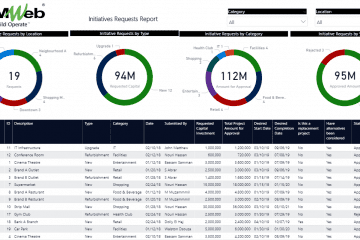According to the Project Management Institute (PMI), the term project stakeholder refers to an individual, group, or organization, who may affect, be affected by, or perceive itself to be affected by a decision, activity, or outcome of a project” (Project Management Institute, 2013). Project stakeholders are entities that have an interest in a given project. These stakeholders may be inside or outside an organization which: sponsor a project or have an interest or a gain upon successful completion of a project; may have a positive or negative influence on the project completion.
The following are examples of project stakeholders: project leader, senior management, project team members, project customer, resource managers, business line managers, product user group, any group impacted by the project as it progresses, any group affected by the project when it is completed, subcontractors to the project or consultants to the project. The stakeholder influence chart of Beirut Central District, also known as SOLIDERE, is an example of the extent of stakeholders that could influence or impact a project.

Project stakeholder management includes the processes required to identify people, groups, or organizations that could impact or be impacted by the project, to analyze stakeholder expectations and their impact on the project, and to develop appropriate management strategies for effectively engaging stakeholder in project decisions and executions (Project Management Institute (PMI) Project Management Body of Knowledge (PMBOK®) Sixth Edition).
To enable a successful implementation of project stakeholder management, there will be a need to have the forms to support the different processes’ performance. The “A Project Manager’s Book of Forms,” third edition by Cynthia Snyder Dionisio, a companion to the PMBOK® Guide – Sixth Edition, provides an example of the forms needed to implement project stakeholder management. Also, using a Project Management Information System (PMIS) like PMWeb will help in standardizing as well as enforcing the implementation of project stakeholder management processes as well as other PMBOK® across the organization’s complete projects portfolio.
The first process for project stakeholder management is identifying all people or organizations impacted by the project and documenting relevant information regarding their interests, involvement, and impact on project success. The output form of this process will be created using PMWeb form builder is the Stakeholder Register, which will be used to identify those people and organizations impacted by the project and to document relevant information about each stakeholder.

The stakeholder analysis form, another form created using PMWeb form builder, is used to classify stakeholders. It can be used to help fill in the stakeholder register. Analyzing stakeholders can also help in planning stakeholder engagement for groups of stakeholders. The following form example shown below is used to assess the relative power (high or low), the relative interest (high or low), and the attitude (friend or foe). There are many other ways to categorize stakeholders. Some examples include: influence/impact and Power/urgency/legitimacy.

The stakeholder analysis form could include a list of critical questions that will help get more details and understanding of the stakeholder and their influence and interest in the project. The questions will help prompt answers on how the stakeholder is likely to feel about and react to the project. It also helps the project team know how best to engage the stakeholder in the project and how best to communicate with them.

The next process in PMI’s Project Stakeholder Management knowledge area is Plan Stakeholder Engagement. This process covers developing approaches to involve project stakeholders based on their needs, expectations, interests, and potential impact on the project. The stakeholder engagement plan is a component of the project management plan. It describes the strategies and actions used to promote the productive involvement of stakeholders in decision making and project execution. The stakeholder engagement plan is another form that will be created using the PMWeb form builder.

In addition, PMWeb allows attaching all supportive documents for each project stakeholder management form. Those documents are usually uploaded into the PMWeb Document Management repository under the folder specific for each process. Also, links to other relevant PMWeb records and imported MS Outlook emails can also be added. This will ensure complete transparency into the content of each formal project communication.

A workflow will be assigned to each project stakeholder management form to ensure responsibility for submitting, reviewing, and approving each stakeholder management process formally implemented. The workflow will identify all needed steps, each step’s duration, responsibility for each step, actions taken for each step, and sequence for performing those steps. PMWeb also allows adding conditions to the workflow steps to incorporate the approval authority levels.

The data captured in the different Project Stakeholder forms will become the basis for creating the stakeholder analysis and register report. The report will include a register of all identified project stakeholders and the captured data for each stakeholder. The report consists of five visuals to group the project stakeholders by stakeholder company type, stakeholder role, assessment of impact, current stakeholder status, and selected-response strategy. The report will also include a visual for stakeholder prioritization grid, which shows each stakeholder reported interest and influence against a score of 6 for each. The chart color code the stakeholders by the four types of response strategy being Keep Satisfied for high interest and low influence, Manage Closely for increased interest and high influence, Keep Informed for low interest and increased influence, and Monitor for low interest and low influence.




